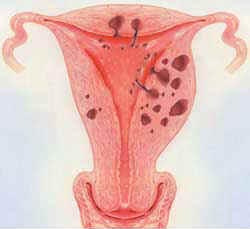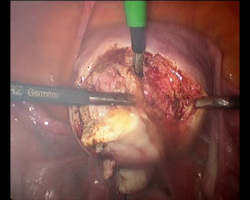
It is a relatively gynaecological condition and can be responsible for:
- Painful menstrual periods
- Heavy menstrual periods
- Infertility
In a way it is similar to endometriosis, in that the lining of the womb is not where it is supposed to be. With endometriosis the same tissue that lines the cavity of the womb is found outside the uterus. With Adenomyosis even though it is in the uterus it is again in the wrong place i.e. in the muscle as well as the lining.
How common it is in a normal population is unknown but figures quoted are between 20-30%.
It is commonest in women between the ages of 40-50years but has been diagnosed in women as young as 17 years
It is commoner in women who have had children but may also be a reason for infertility.
It can co-exist with endometriosis in about 20% of women. In women with infertility and endometriosis it is seen in up to 28% of women.
Historically it used to be only diagnosed in hysterectomy specimen. Now however it is possible to get a diagnosis with less invasive investigations. The correlation between clinical diagnosis and proof at investigation is still quite poor. And the management of this condition is hindered by the lack of reliable investigations.
To make a diagnosis the first investigation would be an
Ultrasound scan:
The accuracy of this test varies and sometimes is operator dependent. There are however agreed specific findings that ultrasonographers use to make a diagnosis.
MRI:
This is probably more accurate than ultrasound but is more expensive.
Hysteroscopy: with or without biopsy: there are certain features that suggest Adenomyosis at hysteroscopy
Laparoscopy:
There are also certain features that are identified at laparoscopy. It is however unusual that laparoscopy is carried out for the sole purpose of diagnosing Adenomyosis. It would be carried out for the investigation into a possible cause of pelvic pain. In the past certain investigators took biopsies of the uterus at laparoscopy to try and diagnose Adenomyosis but unfortunately the biopsies did not always prove the presence of Adenomyosis.









 RSS Feed
RSS Feed